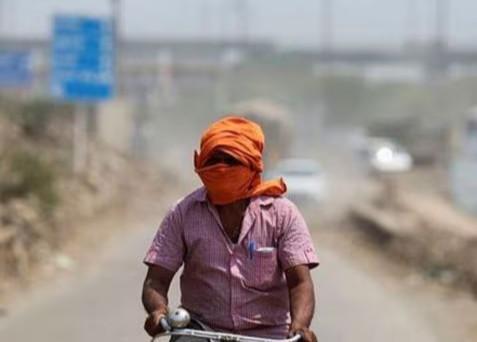
Extreme Heat Endangering Health & Productivity of Workers: Report
As the world grapples with the challenges of climate change, a recent report by the World Health Organisation (WHO) and the World Meteorological Organisation (WMO) has sounded the alarm about the alarming impact of extreme heat on the health and productivity of workers worldwide.
According to the report, worker productivity drops by a staggering 2-3% for every degree above 20°C. This may not seem like a significant decline, but when you consider the global average temperature is expected to rise by 3-5°C by the end of the century, the consequences are dire.
The report highlights that manual workers in agriculture, construction, and other sectors are particularly vulnerable to the negative effects of extreme heat. These workers are often exposed to harsh conditions, with little respite or protection from the scorching sun.
Moreover, the report notes that vulnerable populations, such as children and the elderly, in developing countries are at an even greater risk. These individuals may not have access to proper healthcare, sanitation, or air conditioning, making them more susceptible to heat-related illnesses.
The health risks associated with extreme heat are numerous and varied. Heatstroke, dehydration, and kidney dysfunction are just a few of the potential consequences of prolonged exposure to high temperatures. These conditions can be life-threatening, especially for those who are already compromised by pre-existing medical conditions.
The impact of extreme heat on worker productivity is not limited to individual health risks. When workers are unable to perform their duties due to heat-related illnesses, it can have a ripple effect on the entire economy. Businesses may suffer from decreased output, employee absenteeism, and increased healthcare costs.
The report also highlights the need for effective strategies to mitigate the effects of extreme heat. Some of the recommendations include:
- Providing adequate breaks and shade for workers to cool down and rest.
- Implementing heat stress prevention programs, including education and training on heat-related illnesses.
- Encouraging the use of personal protective equipment, such as cooling vests and hats.
- Developing early warning systems to alert workers and the public of impending heatwaves.
- Investing in research and development of heat-stress reducing technologies and materials.
In addition to these recommendations, governments and employers must also take proactive steps to ensure the health and safety of workers. This includes providing access to clean water, sanitation facilities, and air conditioning in workplaces, especially in hot climates.
The report’s findings are a stark reminder of the need for urgent action to address the impact of climate change on worker health and productivity. As the world continues to grapple with the challenges of rising temperatures, it is essential that we prioritize the well-being of our most vulnerable workers.
Source: https://repository.inshorts.com/articles/en/PTI/45d9bd2d-ff57-417c-9e5f-831344bb34b0






